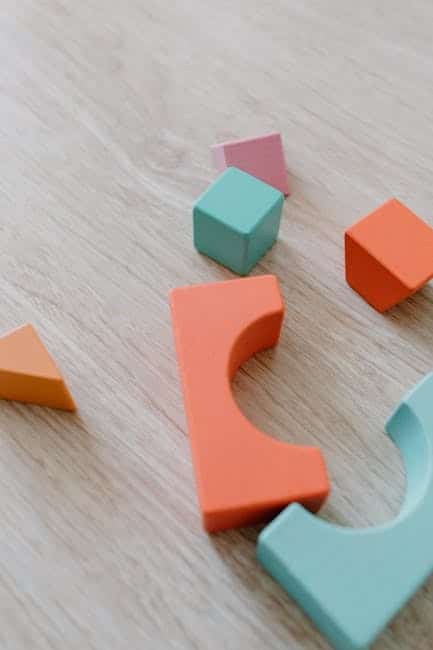How to Create a Sensory Play Area with Toys
Are you looking to spark creativity and development in your child’s playtime? Creating a sensory play area with toys can be a fantastic way to engage their senses and promote learning. In this guide, we’ll walk you through everything you need to know to set up an enriching sensory play space right at home. Let’s dive in! 🎨👶
Table of Contents
1. Introduction
2. Understanding Sensory Play
3. Benefits of Sensory Play
4. Essential Elements of a Sensory Play Area
5. Choosing the Right Toys
6. Setting Up the Area
7. Safety Tips
8. Conclusion
9. FAQs
Understanding Sensory Play
Sensory play involves activities that stimulate a child’s senses: touch, sight, sound, smell, and taste. It is a crucial component of early childhood development, helping kids explore and learn about the world around them. Sensory play can be as simple as playing with sand or as elaborate as creating a dedicated sensory room. 🌟
Benefits of Sensory Play
Engaging in sensory play has numerous benefits for children. Here are a few:
1. Enhances Cognitive Development: Sensory activities encourage children to think critically, solve problems, and make decisions.
2. Improves Motor Skills: Manipulating different textures and objects helps develop fine and gross motor skills.
3. Encourages Language Development: As children describe their sensory experiences, they expand their vocabulary and communication skills.
4. Fosters Social Interaction: Sensory activities often involve group play, promoting sharing, cooperation, and social skills.
Essential Elements of a Sensory Play Area
Creating a sensory play area doesn’t have to be complicated. Here are some essential elements to consider:
1. Textures
Incorporate a variety of textures such as sand, water, rice, or fabric. These materials can be placed in bins or trays for easy access.
2. Colors
Bright, contrasting colors stimulate visual senses. Use colorful toys, mats, and decorations to make the area inviting.
3. Sounds
Introduce sound elements like musical instruments, shakers, or even a simple bell. These can help children explore different auditory sensations.
4. Scents
Use scented playdough or safe, scented markers to add an olfactory dimension to playtime.
5. Safe Space
Ensure the area is safe, with soft flooring and child-proofed surroundings, to prevent injuries.
Choosing the Right Toys
The right toys can make all the difference in a sensory play area. Consider the following types of toys:
1. Tactile Toys
Items like kinetic sand, squishy balls, and textured blocks are perfect for tactile exploration.
2. Visual Toys
Opt for toys with bright lights or contrasting colors such as a lava lamp or a light projector.
3. Auditory Toys
Musical instruments, sound puzzles, and talking toys provide auditory stimulation.
4. Scented Toys
Scented doughs or markers engage the sense of smell while being fun to use.
Setting Up the Area
Once you have your elements and toys ready, it’s time to set up the area:
1. Select a Location
Choose a part of your home with enough space for movement and exploration. A corner of a living room or a dedicated playroom works well.
2. Organize the Space
Divide the area into different sensory zones—each focusing on a different sense. Use baskets or bins to keep toys organized.
3. Accessibility
Ensure that all toys and materials are within easy reach of your child to encourage independent play.
Safety Tips
While sensory play is beneficial, safety should always come first:
1. Supervise Playtime
Always keep an eye on your child to prevent choking hazards or other accidents.
2. Check Toy Safety
Ensure all toys are age-appropriate and free from small, detachable parts.
3. Maintain Cleanliness
Regularly clean the play area and toys to prevent the spread of germs.
Conclusion
Creating a sensory play area with toys is a rewarding endeavor that offers countless benefits for your child’s development. By carefully selecting elements and toys, organizing the space efficiently, and prioritizing safety, you can create an engaging environment that stimulates your child’s senses and fosters learning. Ready to start your sensory play journey? Let’s make playtime a world of discovery! 🌈
FAQs
What age is appropriate for sensory play?
Sensory play is suitable for children from as young as six months old, with activities adjusted to be age-appropriate as they grow.
How often should my child engage in sensory play?
There’s no strict rule, but incorporating sensory play into daily or weekly routines can greatly benefit development.
Can sensory play help with special needs?
Yes, sensory play can be particularly beneficial for children with special needs, offering therapeutic benefits and aiding in sensory processing.
Do I need to buy expensive toys for sensory play?
Not at all! Many everyday household items can be used for sensory play, such as rice, water, and homemade playdough.
Creating a sensory play area doesn’t have to be a daunting task. By embracing creativity and focusing on your child’s needs, you can build a space that offers endless opportunities for exploration and learning. Happy playing! 🎉
